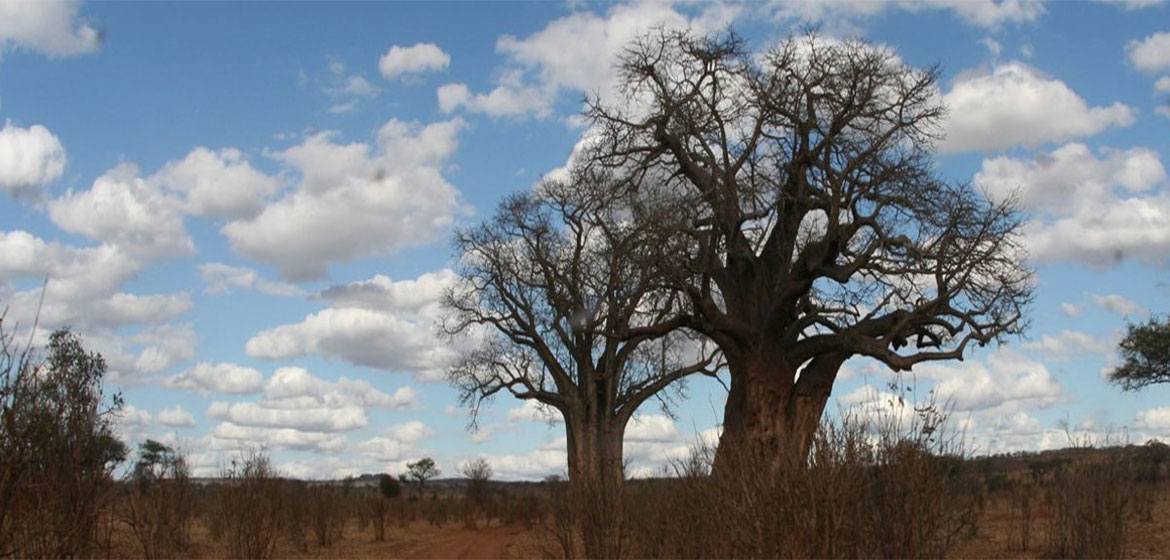- More than half of the oldest and largest trees in a recent study died — or had significant parts of their structures die — between 2005 and 2017.
- Nearly all of these trees were at least 1,000 years old, and one was nearly 2,500 years old.
- The researchers believe that higher temperatures and more than a decade of drought in southern Africa, likely due to climate change, may have killed these baobabs.
The oldest members of one of Africa’s iconic tree species, the African baobab (Adansonia digitata), appear to be in trouble, according to a study out this week. Across the tree’s range in sub-Saharan Africa, several cultures about the first appearance of the distinctively shaped tree, with its wispy branches set atop a girthy base that can be twice as big around as the tree is tall.
Earth’s creator, so the story goes, first placed the baobab in the lush forests of the Congo Basin. But the tree complained about the heat, so the creator placed it high in the cloud forests of the Ruwenzori Mountains along the border between modern-day Uganda and the Democratic Republic of Congo. But again, the tree wasn’t happy, saying that the humidity there was still too high. Frustrated, the creator yanked up the baobab and tossed it into Africa’s drier regions. It landed topside in the ground, which is why it looks like an upended tree with its roots reaching skyward.
Now that fabled finickiness might be surfacing once again. The new research, , catalogs a worrisome die-off among some of the oldest and largest baobabs on the continent, likely as a result of climate change.
“It is definitely shocking and dramatic to experience during our lifetime the demise of so many trees with millennial ages,” Adrian Patrut, the study’s lead author and a chemist at Romania’s Babeș-Bolyai University, .

Patrut and his colleagues were trying to tease apart baobabs’ unusual architecture, which often includes gaps, or “cavities,” in their trunks that are unique to the species. Back in 2005, the team had selected a few dozen of Africa’s largest baobabs, all of which were living in southern Africa. Using radiocarbon dating of different pieces from the same tree, they figured out that a baobab sprouts a bunch of stems over its lifetime, similar to the way in which other trees grow branches. These multiple stems conspire to create the increasingly complex architecture that the oldest trees are known for.
But in their follow-ups, the scientists discovered that more than half of the oldest trees — most of which were more than 1,000 years old and one that was nearly 2,500 years old — had either died completely or their oldest or largest stems had died since 2005.
The team checked the trees for signs of infection or disease, but found none. Elsewhere, older baobabs are also dying, and together, those findings led the team to deduce that a changing climate might be to blame.
Years of drought in this part of Africa and rising temperatures could be keeping them from recovering after flowering or dropping their leaves, Patrut . But he and his fellow authors note that they’ll need to do more research to know for sure.

Erika Wise, a climatologist at the University of North Carolina, who was not involved in the research, said she agreed that climate change was the likely “culprit,” the Atlantic reported. More common causes of death, she added, just don’t make sense for such a long-lived tree.
“[A] 500-year-old tree has experienced a lot of insect outbreaks and lived through them,” she told the magazine. “Something is pushing them over the brink this time around.”
Source:
Related to SDG 13: Climate action



